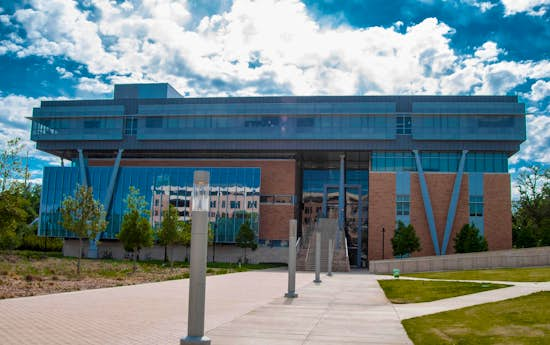713 results nationwide
List of 3.6 GPA Colleges
Displaying 713 colleges where your 3.6 GPA is within the typical range of past accepted students. You have a chance at being accepted but admission may be challenging at more selective colleges. Hint: Filter by admission chance for 2,025 target schools (good chance), 456 reach (harder) schools and 2,634 safety (easier) schools you can consider.
University of Oregon
Public 4 Year
4 reviews
3.73 Average GPA
Public 4 Year
4 reviews
#1 Best Public Universities in Oregon
- 23,163enrollment
- $22,077net price
- 86%acceptance rate
- 1140-1370SAT range
- 24-30ACT range
Applications Due Jan 15
Indiana University Bloomington
Public 4 Year
2 reviews
3.74 Average GPA
Public 4 Year
2 reviews
#2 Best Public Universities in Indiana
- 47,005enrollment
- $16,234net price
- 82%acceptance rate
- 1180-1400SAT range
- 27-32ACT range
Oregon State University
Public 4 Year
1 reviews
3.61 Average GPA
Public 4 Year
1 reviews
#2 Best Public Universities in Oregon
- 34,292enrollment
- $21,163net price
- 83%acceptance rate
- 1120-1370SAT range
- 21-28ACT range
Applications Due Feb 1
Iowa State University
Public 4 Year
4 reviews
3.7 Average GPA
Public 4 Year
4 reviews
#2 Best Public Universities in Iowa
- 29,969enrollment
- $15,310net price
- 90%acceptance rate
- 1090-1350SAT range
- 21-28ACT range
University of San Francisco
Private 4 Year
0 reviews
3.57 Average GPA
Private 4 Year
0 reviews
#12 Best Private Colleges in California
- 9,688enrollment
- $42,953net price
- 71%acceptance rate
- 1210-1410SAT range
- 27-31ACT range
Applications Due Jan 15
University of Illinois at Urbana Champaign
Public 4 Year
5 reviews
3.79 Estimated Average GPA
Public 4 Year
5 reviews
#18 Best Public Universities in America
- 56,916enrollment
- $14,544net price
- 45%acceptance rate
- 1320-1510SAT range
- 29-34ACT range
Applications Due Jan 5
University of Pittsburgh Pittsburgh Campus
Public 4 Year
5 reviews
3.79 Estimated Average GPA
Public 4 Year
5 reviews
#24 Best Public Universities in America
- 33,767enrollment
- $24,286net price
- 49%acceptance rate
- 1280-1470SAT range
- 29-33ACT range
James Madison University
Public 4 Year
3 reviews
3.57 Estimated Average GPA
Public 4 Year
3 reviews
#6 Best Public Universities in Virginia
- 22,224enrollment
- $18,274net price
- 78%acceptance rate
- 1140-1320SAT range
- 23-29ACT range
Applications Due Jan 15
University of Illinois at Chicago
Public 4 Year
2 reviews
3.41 Average GPA
Public 4 Year
2 reviews
#2 Best Public Universities in Illinois
- 33,747enrollment
- $10,384net price
- 79%acceptance rate
- 1110-1340SAT range
- 24-30ACT range
Applications Due Feb 1
University of North Texas
Public 4 Year
3 reviews
3.46 Estimated Average GPA
Public 4 Year
3 reviews
#8 Best Public Universities in Texas
- 44,767enrollment
- $15,283net price
- 79%acceptance rate
- 1000-1240SAT range
- 19-27ACT range
Applications Due Aug 1
Grand Valley State University
Public 4 Year
3 reviews
3.65 Average GPA
Public 4 Year
3 reviews
#6 Best Public Universities in Michigan
- 21,648enrollment
- $17,105net price
- 90%acceptance rate
- 960-1210SAT range
- 21-27ACT range
Applications Due May 1
University of South Florida Main Campus
Public 4 Year
4 reviews
3.64 Estimated Average GPA
Public 4 Year
4 reviews
#4 Best Public Universities in Florida
- 49,600enrollment
- $11,004net price
- 44%acceptance rate
- 1140-1330SAT range
- 24-29ACT range
Applications Due May 1
West Virginia University
Public 4 Year
4 reviews
3.45 Average GPA
Public 4 Year
4 reviews
#1 Best Value in West Virginia
- 24,741enrollment
- $12,202net price
- 88%acceptance rate
- 1000-1220SAT range
- 20-26ACT range
Fordham University
Private 4 Year
5 reviews
3.67 Average GPA
Private 4 Year
5 reviews
#13 Best Private Colleges in New York
- 16,556enrollment
- $43,943net price
- 54%acceptance rate
- 1320-1480SAT range
- 30-33ACT range
Applications Due Jan 1
Santa Clara University
Private 4 Year
14 reviews
3.67 Average GPA
Private 4 Year
14 reviews
#7 Best Private Colleges in California
- 9,178enrollment
- $50,551net price
- 52%acceptance rate
- 1290-1480SAT range
- 29-33ACT range
Applications Due Jan 7
Elon University
Private 4 Year
1 reviews
3.65 Estimated Average GPA
Private 4 Year
1 reviews
#3 Best Private Colleges in North Carolina
- 7,123enrollment
- $41,527net price
- 74%acceptance rate
- 1170-1360SAT range
- 25-30ACT range
Applications Due Jan 10
Ball State University
Public 4 Year
5 reviews
3.52 Average GPA
Public 4 Year
5 reviews
#4 Best Public Universities in Indiana
- 19,777enrollment
- $12,615net price
- 69%acceptance rate
- 1090-1260SAT range
- 23-28ACT range
University of North Carolina at Charlotte
Public 4 Year
0 reviews
3.57 Average GPA
Public 4 Year
0 reviews
#6 Best Public Universities in North Carolina
- 29,551enrollment
- $13,951net price
- 80%acceptance rate
- 1070-1290SAT range
- 20-27ACT range
Applications Due Jun 1


















